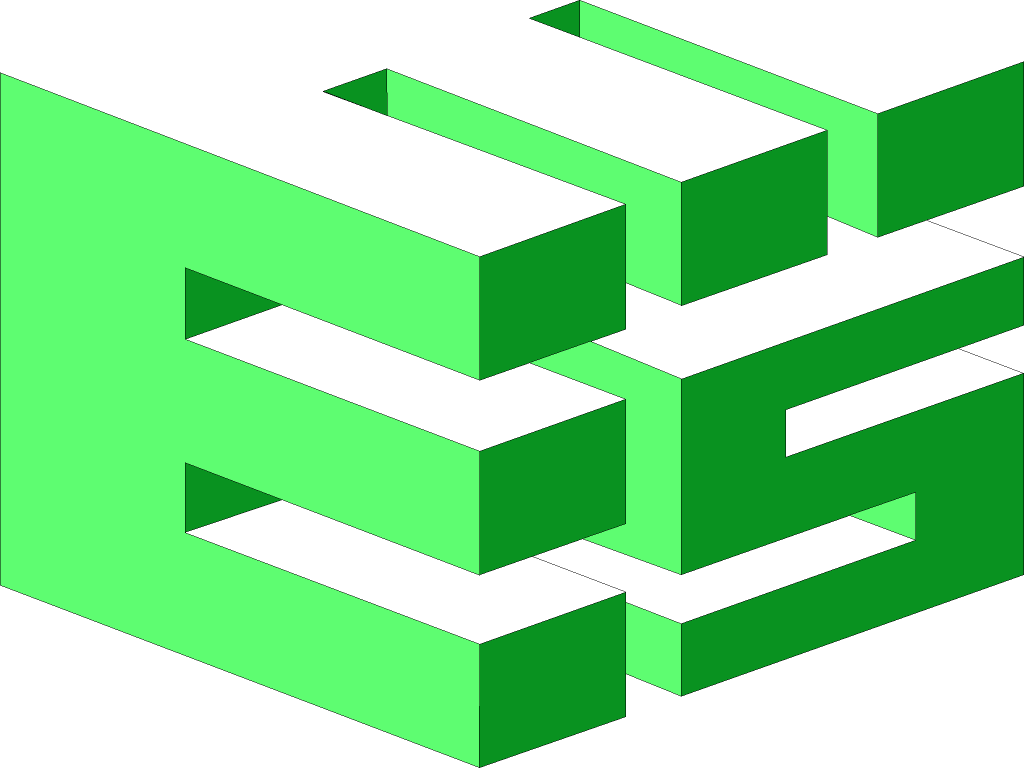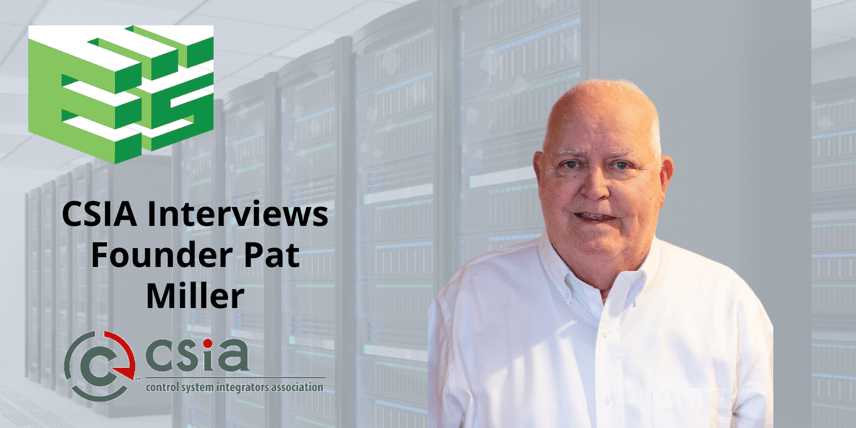 EES’ Founder and CEO Pat Miller was featured in a CSIA Talking Industrial Automation podcast by host Lisa Richter. With his usual wit and wisdom, Pat shares the origin story of EES and entertains listeners along the way.
EES’ Founder and CEO Pat Miller was featured in a CSIA Talking Industrial Automation podcast by host Lisa Richter. With his usual wit and wisdom, Pat shares the origin story of EES and entertains listeners along the way.
An Early Interest in Energy
Pat Miller happened upon the career of control system integration because of his longtime interest in energy and his bachelor’s degree thesis on solar and wind power. “Well, I pretty much stumbled into it,” Pat quipped. “I graduated from college and the first job I had was working with Pratt and Whitney in Florida to help us get to the moon. And because of my efforts, we probably got there one eighth of a second faster than if I'd never been there. It was a huge company. Afterwards, I was a Lieutenant in the army in Oklahoma, and I kept the communists out of Oklahoma for two years. Next, I decided to become a sales engineer for Trane Company out of La Crosse, Wisconsin. I went there for six months’ training and then was assigned to New Jersey as a sales engineer. As part of this, I was involved in the HVAC world and it was 100% commission selling… so you were unemployed every morning when you got up. And as part of that, I became very interested in energy.”
“I had done a thesis in order to get out of the University of Detroit on natural energy: solar and wind. And my battery was a reservoir where we would pump water from the wind or the solar when the wind was blowing and the sun was shining. And then when that didn't happen, we would run the water down the hill and run a turbine and continue making the power with water. I was very interested in energy. In those days, most of the equipment was running full bore and not being very energy efficient. We stood in gas lines, and energy became very important. As part of that, I had gotten my P.E. so I was the only professional engineer in our group. We decided to form an energy department. From that grew Engineered Energy. At one point, I was a full partner and then I ended up buying out the other people and it was my baby.”
EES in the Early Years
In the beginning, EES was, in Pat’s words, a “small operation. I was a sales engineer, and when we formed the company, it was just me and we were taking chilled water plants and looking at running the chillers more efficiently. I was still selling Trane equipment so, I wasn't getting paid for it and for three or four years, it struggled along. We finally got to maybe $300,000 or $400,000 in sales. At that point, my agreement was we would form a separate company. I always wanted to be the owner of my own Company, I think since the time I was a paper boy when I was 11 years old. I think I was an entrepreneur throughout my career.”
“This was the culmination of, ‘Okay, now you've got enough money to do this.’ We started the company and it just grew naturally from there and our clients were Fortune 500 companies in the metropolitan New York area where there are a lot of pharmaceuticals. Of course, we had New York City and we hooked onto a number of anchor clients and we would do one project for them and then we would go do another project for them. They were multi-use or multi-building clients, big-time guys.”
EES found that with the new technology of the era, energy and cost savings were within reach of the company’s clients. “We were smart; we started off with single-board computers and then we discovered there were something called PLCs – and not only could we optimize the chillers and the pumps and the towers, with a PLC we could turn them on and off. It was amazing how much energy you could save if you can turn something off. It doesn't take a lot of power when they're off. That technology became what we call PROCOS™, which was Programmable Chiller Optimization System. So, our product was PROCOS™ and it grew; we went from two or three people to as many as 20 during this growth time – exciting.”
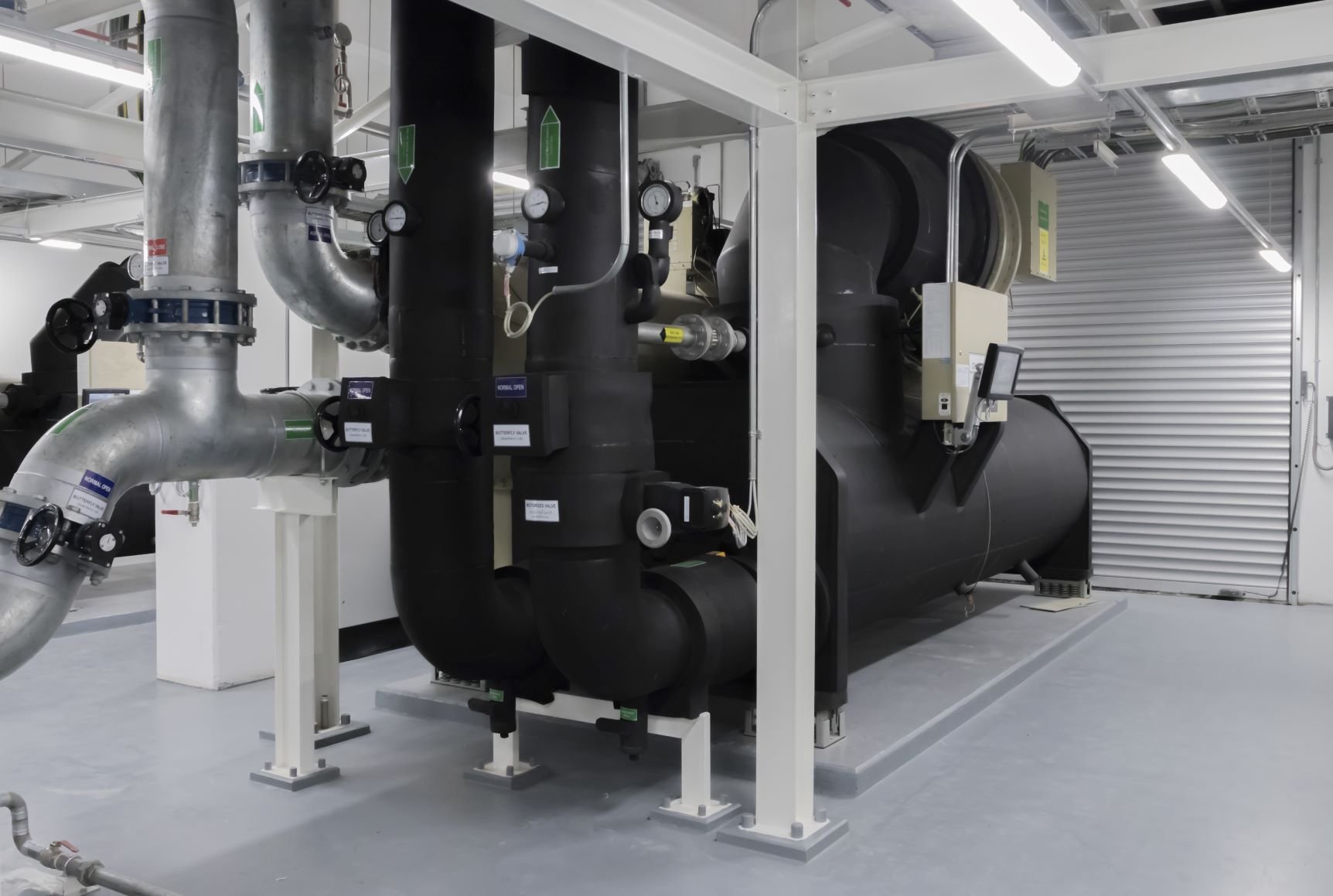
“I had some brilliant people that were certainly more technical; electronic software writers, you know, PLCs are all ladder-diagram logic. It’s pretty simple: if you know how to read a wiring diagram, you know how to write the code. So, you didn't have to know COBOL or be one of these super code guys. The technology just gravitated to that and pretty much Allen-Bradley, but we certainly use Siemens and GE, pretty much whoever the client wanted. A lot of these clients at that time had what they called ‘central engineering departments’ and some brilliant finance guys said, ‘What are we hiring these guys for? We could outsource it.’ All of these central engineering departments throughout the country pretty much let go of their engineering staff. They started outsourcing other people to do the work because they didn't have to pay them the pension and pay them overtime and all the other stuff was on us. The time was right for system integrators to grow and develop. And that's pretty much where we came in.”
Saving Clients Money on Utilities
Pat laments that CEOs are not aware of how much energy and money they are wasting by not updating the building management control systems at their facilities. “We are driven towards taking care of existing clients. The problem is, the sale of what we do is a complex sale; it takes a number of months or years to convince the client that what we do helps them... It not only helps them, but puts some money in his pocket. He has an asset in his basement. Some CEOs and CFOs don't even know that they have a chilled water plant or a boiler plant in their facility. Once they recognize that, then they can save money. They are paying a couple of million dollars to run this operation, and we could save them 10-50% of what they're spending, and that just goes to their bottom line.”
“Once you get their attention, they say, ‘Oh my gosh!’ You can do that without sacrificing comfort, humidity, building pressure – then it becomes interesting. Once you have them buying into what you're doing, then the next sale is really simple. ‘Oh, you've done it here. Why don't you do it there?’ So, it grows.”
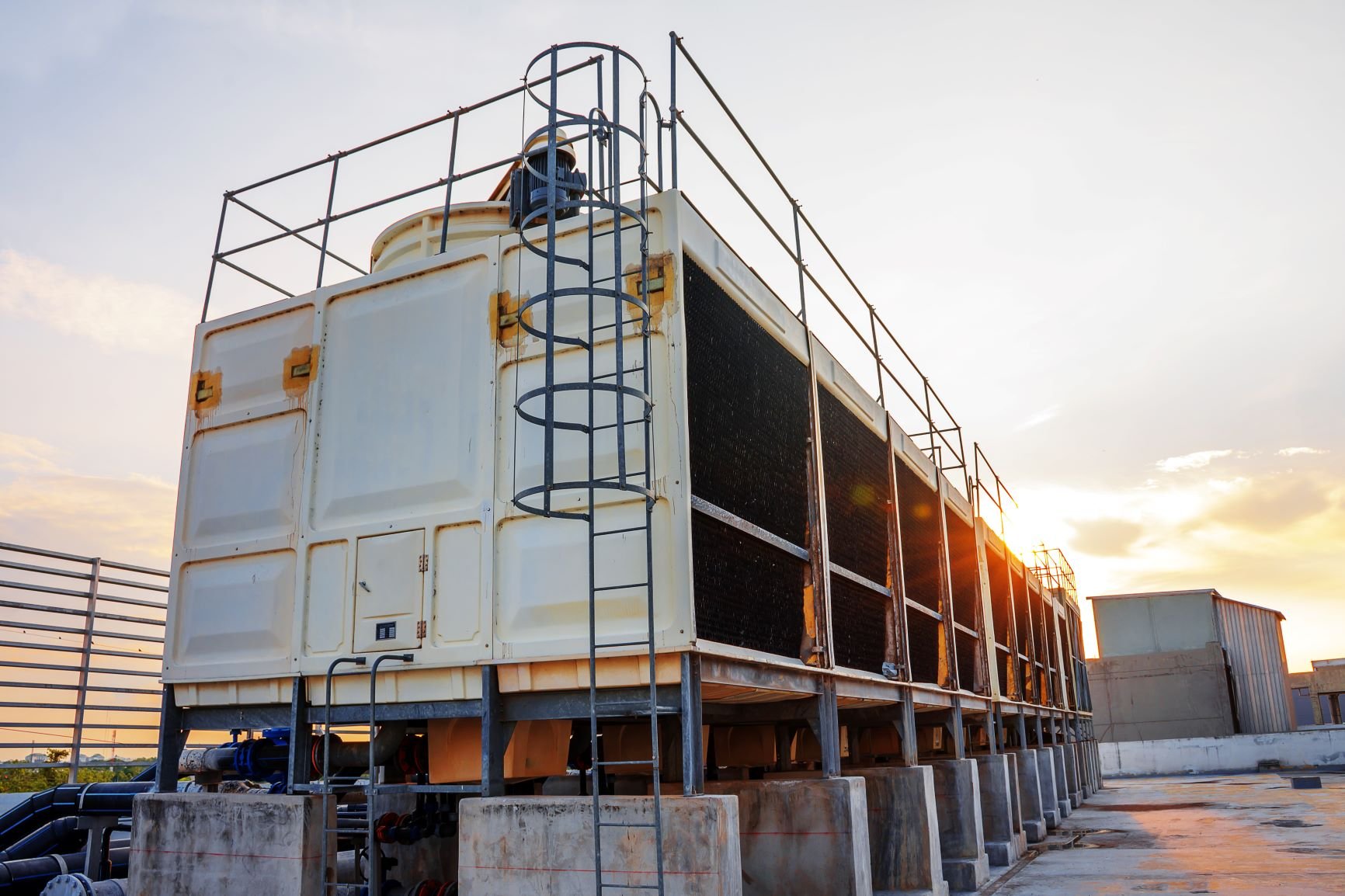
Although mainly known for building management systems, EES also has deep experience in the transportation control industry. “The transportation piece we really stumbled into because there was a bid that we bid on to automate the Queens Midtown Tunnel and the Brooklyn Battery Tunnel for Triborough Bridge and Tunnel Authority, and believe it or not, we were probably the low bidder. I think it was like a $2,900,000, three-year job. We did that job and were successful, and we've been there ever since with service contracts, and the next tunnel, and the next renovation…
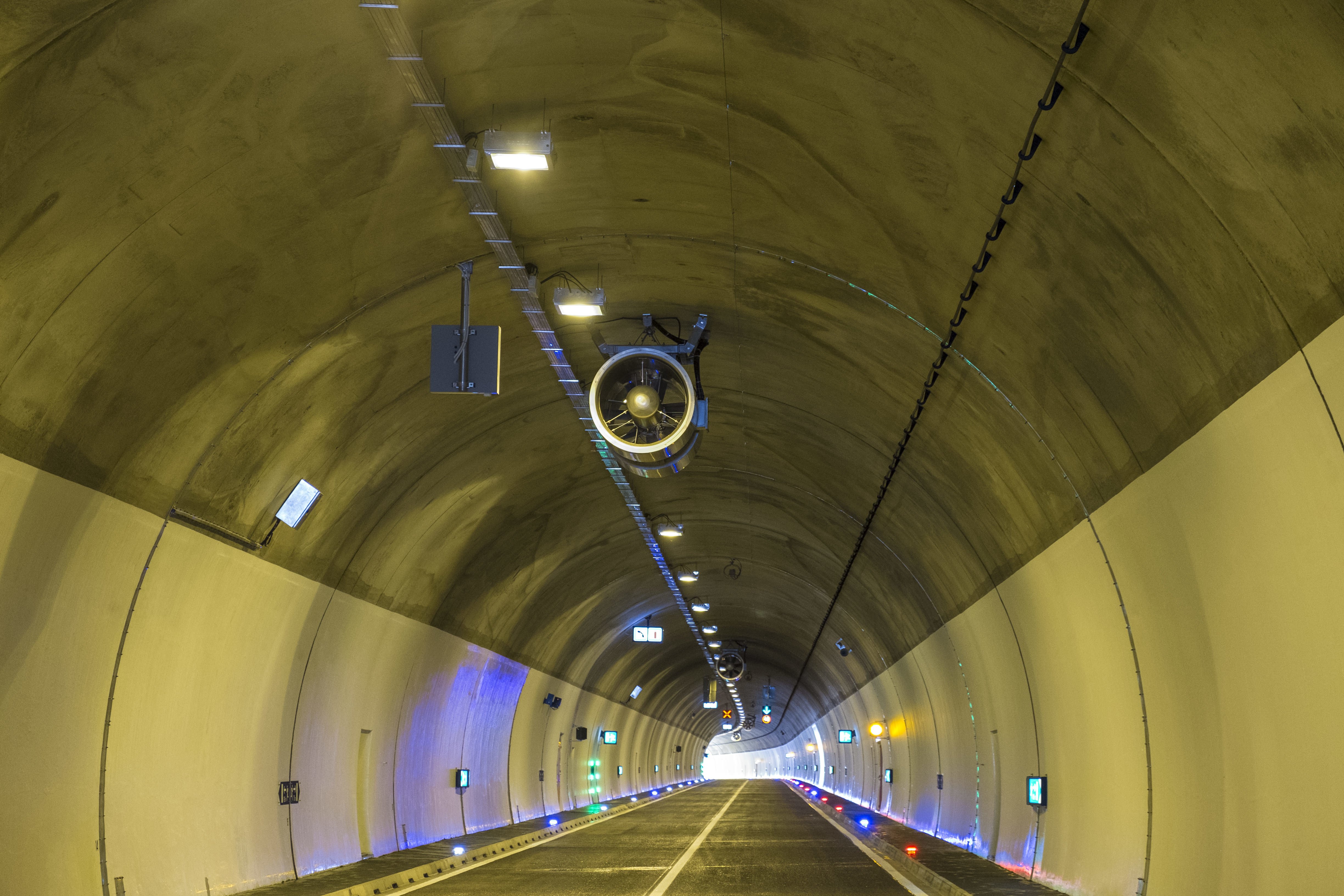
In some cases, EES has outlasted the client. “There are clients we've had who have actually closed their facilities and have sold the buildings to someone else. Then, we find ourselves ten years later going back into the same building and because we know everything that's going on there, redoing it again. A part of our success is longevity, hanging around long enough.”
Saving Our Planet
Knowledge of wasted energy that occurs with most building management systems has turned Pat into a climate advocate. “Once you see how these plants are operating, you can see there is tremendous potential to not only save energy, but the new people that are involved are worrying about the planet. When you save energy, you’re also saving the planet by having less carbon dioxide. Now we’re using that as a marketing tool: we help save the planet. Not only do we save you dollars and keep things running better, but we’re going to keep the planet alive. And that comes to a welcome heir, to the millennials and the new people.”
Technology in Building Management Systems
EES is brand neutral and works with a variety of control system manufacturers. Along with Allen Bradly, EES has done a lot of work with Siemens. “We also did a plant in Dubai, which was all General Electric. ABB, which is ASEA Brown Boveri, they have a product line called Cylon and we use that for the terminal units, which by ‘terminal,’ I mean local control of the thermostat in your office so you can control the conditions in each zone or room. We go from the whole plant to the actual delivery of the air or the hot water or cold water to heat and cool it - HVAC-type of thing, a building management system. We go from one end to the other, controlling the entire facility's HVAC system.”
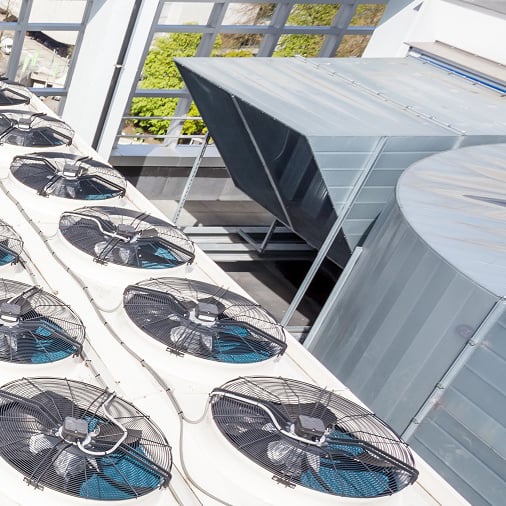
Besides controlling the HVAC equipment, EES also designs the operator controls (known as the front end) which, if well designed, can offer further energy savings. “I call the operator controls the ‘pretty pictures’ because it's the screen on your computer that says, ‘This is running right. This isn't running right. This is going too fast. This is going too slow. Here's the temperature of this room.’ When the facility managers get a complaint, they can remote in and see it. The control used to be proportional only when it was all pneumatic and now with electronics it's what we call PID. That's proportional integral and derivative. With PID control, you can land things right on the runway, so you're not overshooting. And once you can do that, you take advantage of weather, take advantage of shading, take advantage of all kinds of things that can help you save energy. The sophistication in the software on how you look at the different inputs is very important.”
Pat believes in investing in quality equipment which gives a better outcome for the client. “The other piece of that equation is the instrumentation that you use. We use industrial quality ISA (Instrument Society of America) sensors. They're more expensive but they're more reliable, more repeatable. You've got to spend some good bucks... You know, garbage in, garbage out. You need to make sure that what you're bringing in does the job so it's a complete answer for the building client, the owner. We like to sell to the owner because he's writing the check to the power company, or to the gas company. But that's hard; it's very hard to get to the owner. Our whole marketing effort is to get to the client.”
Changes During the Pandemic
The pandemic has brought about changes and challenges both for EES and their clients. “The whole COVID thing is all new and everybody's trying to figure out how to cope with this. You can see, like in Manhattan, a lot of empty buildings and I'm not sure where all of this is going. We were about to purchase our own building for EES. We had rented for 40 years and I said, ‘It's about time we bought our own building and paid rent to ourselves.’ And during that time, COVID hit. We decided that we're going to go 100% virtual, so that's what we've done. We are no longer in a building. We have all of our hardware and computers at our homes. We've outfitted all of our employees with that, we have meetings weekly. We have a business meeting with Zoom once a month and we talk to each other and we've gone pretty much paperless. There are lots of challenges going on. I think we've seen some hiccups with that, but it's working. I'm pretty excited about the fact that everybody could stay home. And most of our employees are either at the job site or need to go to the job. We have some issues with where the tools are and those types of things. And when we're ordering equipment, where does the equipment end up? But, you know, we're working our way through it.”
Avoiding Service Disruptions During Project Implementation
With ten employees, EES has a creative approach to their projects which allows them to avoid shutting down existing building management systems during maintenance and upgrades, keeping tenants happy. “The uniqueness is we go very slow to avoid requiring service disruptions to the buildings’ occupants. Our work is heavily retrofit, as compared to new construction. When we have a building that has an operating system and we go in and try to optimize and automate that equipment, we need to keep it running so the project is done piecemeal; we do one little piece at a time. We don't shut everything down one day and then the client is out of business for three months. We need to keep the operation going without them even knowing that we're there; I'd say that's very unique. We have completed a number of projects after we've proved our value to the client, who says ‘Oh, we have a new building going in and we want you guys to be the control systems integrator,’ and then we do work in that direction. But in main, it is what I call, ‘keep the system going and prove it piece by piece.’ “
Repeat Business
EES has a tremendous amount of repeat business due to the company’s focus on helping the client win. Pat said, “Most of our business is repeat. And I think that is because the job that we have done and the confidence that we have built. Nobody wants to start over with somebody new. If you're comfortable with the vendor that you have, you pretty much stay with them unless something happens to make you unhappy. I think we take great pains to make sure that our client wins. And even when we lose, we like to make sure the client wins. We've been into a number of places where we've lasted longer than the client has; that's absolutely true.”
When asked what advice he would give a prospective client researching system integrators, Pat suggests looking for a company with experience. “I think if I were the owner, I would certainly look to someone who has done what I'm looking for before. I don't want to be his trial. Thank God we had some people use us to begin with, and that helps because it’s very hard to get someone to give you an order if you've never done it before. I would certainly look to an integrator that had done something like what I was looking for. And then I say to the prospective client, ‘We've done this before for a client similar to you, and you need to talk to him or to her. Would you like to go visit a facility that we've already done this to?’ “
“Hopefully they say yes. I call my client up and say, ‘I'm bringing Charlie over next week. And would you please show him your plant and show him what we've done for you?’ Pretty much they'll say yes. We take the prospective client there and we get the hell out of the way; we let our existing clients sell our new client. That, to me, is the proof is in the pudding. Our clients become friends also, which really helps us to differentiate ourselves from the rest of the crowd. You know, we're in a niche business. Not too many people do what we do with PLCs or with ABB for the entire plant. So, we're a turnkey-type control systems integrator. We take care of the equipment for years. We look at these buildings daily and we get alarms on their equipment before they do, and before they know they have a problem.”
After reaping savings from modernizing the building management system, additional savings can be realized from implementing predictive maintenance software. “With predictive maintenance, we can tell what equipment is wearing down or what is deteriorating and needs to be replaced, repaired, or cleaned. There's a whole predictive thing that's really coming along in the AI category that we're developing and working on to make sure that we're on top of the customer’s equipment.”
Big Data and The Internet of Things
As a founding member of the Control System Integrators Association (CSIA), Pat believes the association has an important part to play in the future of control systems integration. “The biggest issue that I see is the digital transformation that's happening, and CSIA is really helping on this. The world is turning into big data and who's going to implement this? With the Internet of Things (IoT), you know more now than you ever did before, and it can be used to find out what is really driving your productivity, what is driving your savings? There's a lot of hidden things that some people know by walking into a plant… The more information you get, the better off you are, but the smart thing is which piece is actually making a difference? And I think that's going to change a lot of who we are, and what we're doing in the future.”
“When people think of big data, they're thinking of Twitter and all this other stuff, like Facebook. I'm thinking about all of the information that we now can be getting from the environment. And wow, if we only knew this before, we could have done that and prevented that or helped this. You know, they're talking about net zero in buildings in the next 50 years, and I'm not sure we can't get there. But it takes big data to find out what really are the keys and what we need to concentrate on, because you can spend a lot of money putting new windows in and have a leak, and... it’s a great idea, but it didn't help. The more you know, the better you are in this, just like in everything else.”
Founding CSIA
Back in 1993, Pat was one of the founding members of CSIA and he is still an active member. Regarding its formation he said, ”That was an accident which I hope happened or was waiting to happen. But Charlie Bergman, who was our driving force somehow found us. I'm not sure how he found us all, but he did a newsletter, which was called Technical Marketing. We would only talk on the phone and he had a newsletter which costs fifty bucks a year, a hundred bucks a year, or something like that. In order to be a member of that, you had to call in your proposals, your orders, etc. Charlie would draw a chart and you had a secret number so nobody knew who each of us was, but he'd put those altogether; it was a statistics program. Then, he would write some guidelines on how do we get an order or how to talk to a client.”
“And so this went on for a couple of years and we all became friendly. The phone calls with Charlie were one on one with all of us. At one point we've got about 30 or 40 guys and he said to me, ‘I think we ought to get together.’ I said, ‘Charlie, I think that's a great idea.’ He says, ‘Well, I'm down here in Wilmington, North Carolina; I'll send you a list and you call half of them. Then I'll call the other half. And let's see if we can have a weekend in North Carolina.’ So, we did. And 26 of us showed up in 1993 and what we found out at that point, because everybody thought they were a lone ranger, thought that they were the only game in town and had all their own problems, and sitting at the bars and in the conference that Charlie ran, we all found out that we had the same problems or the same opportunities.”
“CSIA grew out of that. And I was the old guy; I was the guy with the gray hair, so I was the one they elected to be the head honcho. But it wasn't because of my brilliance, it was because of age, I think. We were very lucky that he put us all together and there were some great founding people that really put this organization together, and it has grown through the years. I have six children; this is my seventh so I call CSIA ‘my baby.’ And that's why I’ve still been involved forever because it's very hard for me to let go. I would like to keep it what it was because I think it's important that that initial group and what we found from each other and how we helped each other is why this is a unique trade organization. It's not run by vendors, it's run by integrators. ‘By and for’ we say, and our goal is to keep that trade association working for each of us.”
CSIA has grown from the original 26 to more than 500 members, which is quite an accomplishment in just over 20 years. The collaborative aspect is unique to the organization, which helps retain and draw new members. Pat is very proud of CSIA, giving credit to all the members for its success. “I'm very proud of it obviously, but it sure as heck isn't me; it's all of us and everybody pulling in the boat, everyone's got an oar. What we have to make sure of is that each one of us grabs an oar and pulls on it because it doesn't take much for it to fall apart. I'm very excited about CSIA being international. Luigi De Bernardini is our head guy now, and he's from Italy. It really says a lot that CSIA is not just a U.S. deal; it's an international deal and we all contribute to each other.”
“I'm very excited that it's going, and especially during this time [the pandemic] when we're not having our conferences. The conferences are great because we get together, and it's not just the seminars and what we learn. It's the fact that we interact with each other and it's a social deal, as well as a learning environment.”
CSIA Membership Lends Credibility
When asked why a prospective client should hire a CSIA member, Pat believes that being a CSIA member gives standing to the integrator. “Well, that is up to the client, but what we do is we lend credibility to that individual integrator and the fact that he knows that we are associated with other integrators and with an association. There's also the CSIA certification, but above and beyond the certification, I think the stamp of approval from CSIA helps to say you're not just the dog-and-pony show or a garage shop.”
“I think that helps the client to get some confidence in who you are and what you do, but it's only as good as the integrator is himself and what kind of product he puts up. I say, ‘You're only as good as your last job.’ I'm also an owner of a restaurant. And I always say, ‘You're as good as your last meal.’ People don't like bad meals; your chef has to be on top of his game for every plate that's served.”
Other Business Endeavors
“I had a hotel up here in Upstate New York. I don't have it anymore; I closed it. But it was an old bar-restaurant, hotel and liquor store. My daughter ran that, and then my wife. I got drunk one night and bought a hotel, you know... I bought it for somebody else and they reneged on it. So, I was stuck with a hotel and had no experience in the hotel business at all. It was pretty interesting what I learned from doing something else... Friday night was our big fish fry night, and we got slammed – probably a hundred people came through the door – you know, we had enough fish to maybe feed 50.”
“What I learned from that experience and other ones was you need to be prepared. I took that preparation from the restaurant and I use that in my business. Not that I wasn't previously prepared in my business, but all of our people now are super prepared when they go on the job and preparation is everything. You find that in life, if you're prepared, going through the real deal is simple because all you're doing is going through the motions. Because you know what's coming and you know what might happen and the pluses and the minuses of each of the possible scenarios. Preparation is everything. And I learned that from the restaurant business more so than – I think I knew it from my education, but certainly I was more prepared after that restaurant experience.”
Dream Career
Host Lisa Richter asked Pat if he couldn’t work in a restaurant or in the system integrator community, what career he would have chosen instead. “I just wanted to be a baseball player, so I would've loved to have been a major league baseball player, but I wasn't good enough. I was all-star and I went and played in an all-star game when I was probably 18 or 19 against a guy who ended up pitching for the Pittsburgh Pirates. When I got up to bat, I couldn't see the ball. He threw the ball which hit the glove with the catcher. I don't know how fast he was throwing. I got scared to death, so that was the end of my baseball career. I said to myself, ‘I'm good; I'm not that good.’ I got out early. I didn't have to go through all the pain.”
Pat has some good advice for his younger self. “I grew up, I won't say poor, but I certainly didn't have a lot of money, or my family didn't have a lot of money, so I pretty much took care of myself from the time I was 12 with paper routes, mowing lawns and all of the other stuff. When it came time to go to college, I pretty much put myself through college with college loans and I was a co-op at the University of Detroit, which was a co-op school. I got to work and go to school and it took an extra year. I was money driven, and I probably still am money driven, so success to me was money. And it probably still is, but it's success in money. I think if you want to be an integrator, an entrepreneur is certainly who you've got to be.”
“You’ve got to want it and you also have to dedicate yourself to the job. It's not an eight-to-five job. It's not a Monday-through-Friday job. It's a 24/7 job. I think I spent five or ten years trying to make this happen. It also requires your family to understand what's going on; it's not an easy life because you're in all different phases of the business, not only technically, but financially. I was very smart, or lucky, I'm not sure which, to have a great accountant and a great lawyer. And those two professionals helped me make some great decisions that I wouldn't have made as well as I did.”
“The one thing I would say is that most of us [integrators] grew out of partnerships or we were hooked up with somebody else. And if I had to do it over again, and I've talked to a number of my CSIA buddies, you need to have 51% from day one. You can't have equal-equal; it doesn't work. And it means you’ve got to put more money in than the other guy when you start, because that's how it's divided. Two people can't run the same ship, so you need to be that guy. And if you're not that guy, you need to let the other guy be that guy. You can't have two captains; it has to be one captain. So that's my advice.”
Looking to the Future
Pat is very optimistic about the future of the automation control systems industry and the engineering community in general. “I'm optimistic because when I talk to high school kids and college kids, I tell them, ‘Be an engineer; engineers change the world.’ Doctors and lawyers take care of problems and all the other stuff, but we actually change the world. The engineering community, as far as I'm concerned, really has changed who we are in the last 50 years. And you can also talk about the space race and all the other stuff… A friend of mine has a son who is developing booster rockets for the Mars ship that's going to move the plane two feet per second on Mars. The whole engineering community is really going to change the world.”
“And I think the engineering community is going to save the world, quite honestly. I'm very excited about it, and certainly system integrators are going to be part of that. We get to change how things are made and make them better, more profitable, and get rid of the waste. At EES, we say, ‘We stop the waste’ as one of our tag lines; it's what we do and I think that's true. I've always been an energy guy. In my thesis that I referred to earlier, which was in 1964, I said we were going to run out of oil in the U.S. in 1990, and so we better get smart about what we're doing. Well, here we are now with more oil than we thought we'd ever have, right? And that's 30 years later. Things change, but you know, we're going in the right direction.”
You can listen to the Talking Industrial Automation podcast by CSIA's Lisa Richter here.
